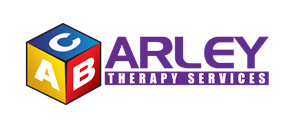By Arley Therapy
Every child learns to communicate in their own unique way, but for some, the journey toward clear speech, understanding language, or safely swallowing food requires extra support. Speech-language pathologists (SLPs) are professionals trained to help children develop the communication and feeding skills that form the foundation for learning, social interaction, and overall well-being.
This article explains the six core areas of pediatric speech therapy—speech disorders, language disorders, cognitive-communication challenges, voice disorders, swallowing difficulties, and fluency issues—and how SLPs evaluate, diagnose, treat, and prevent them in children from birth through age ten.
1. Speech Disorders: The Sounds of Communication
What they are:
Speech disorders affect how a child produces sounds. A child may omit, substitute, or distort certain sounds (“wabbit” for rabbit), making speech hard to understand.
How SLPs help:
- Evaluation: The SLP listens to the child’s speech and may use tests or play-based tasks to identify which sounds are difficult and whether the issue relates to coordination, muscle strength, or sound learning.
- Diagnosis: Determines whether it’s a developmental speech delay, articulation disorder, or motor-based issue such as apraxia of speech.
- Treatment: Uses fun, repetitive exercises, modeling, and visual or tactile cues to teach correct sound patterns.
- Prevention: Encouraging early babbling, singing, and reading aloud helps strengthen sound awareness before school age.
When to seek help:
If by age 3 most people outside the family can’t understand your child, or if sounds don’t progress after age 4, an evaluation is recommended.
2. Language Disorders: Understanding and Using Words
What they are:
Language disorders involve difficulty understanding others (receptive language) or expressing thoughts (expressive language).
How SLPs help:
- Evaluation: Through play, conversation, and formal testing, SLPs assess vocabulary, grammar, and comprehension.
- Diagnosis: Differentiates between a language delay (skills developing slowly) and a language disorder (patterns that differ significantly from typical development).
- Treatment: Tailored activities build comprehension, vocabulary, and sentence structure using stories, games, and visuals.
- Prevention: Rich language environments—talking, narrating daily routines, and reading—foster strong language growth.
When to seek help:
If a toddler isn’t using single words by 18 months or simple sentences by age 3, or struggles to follow directions in preschool, early intervention can make a major difference.
3. Cognitive-Communication Challenges: Thinking and Talking
What they are:
These difficulties affect how a child uses attention, memory, reasoning, and organization to communicate—often seen after head injury, neurological conditions, or developmental differences such as ADHD.
How SLPs help:
- Evaluation: Observation and standardized tests reveal how a child processes information, solves problems, and stays on topic.
- Diagnosis: Identifies specific deficits in attention, memory, or executive function that impact communication.
- Treatment: Activities may include sequencing tasks, storytelling, or strategy training to improve focus and organization.
- Prevention: Teaching self-regulation, turn-taking, and problem-solving in early education supports these skills naturally.
When to seek help:
If a school-aged child forgets instructions, struggles to organize thoughts, or has trouble following multi-step tasks, an SLP can provide valuable strategies.
4. Voice Disorders: The Sound of the Voice
What they are:
Voice disorders occur when the pitch, loudness, or quality of a child’s voice is abnormal for their age or gender—often hoarse, strained, or too soft. This can result from overuse (yelling), illness, or structural problems in the vocal folds.
How SLPs help:
- Evaluation: Assessment includes listening to voice quality and, if needed, collaboration with an ear, nose, and throat (ENT) specialist.
- Diagnosis: Determines whether the issue is behavioral (misuse), medical, or structural.
- Treatment: Teaches healthy vocal habits, breathing techniques, and relaxation strategies.
- Prevention: Encouraging “indoor voices,” hydration, and avoiding throat clearing protects young voices.
When to seek help:
If a child’s hoarse or raspy voice persists longer than two weeks, an evaluation is warranted.
5. Swallowing Difficulties (Dysphagia): Eating and Drinking Safely
What they are:
Some children have trouble chewing, swallowing, or managing textures safely, which can affect nutrition, growth, and quality of life. Swallowing challenges may appear in infants with feeding difficulties or in older children with developmental or medical conditions.
How SLPs help:
- Evaluation: Observation during feeding, sometimes alongside a videofluoroscopic swallow study, helps identify where the difficulty occurs.
- Diagnosis: Determines if the issue is oral (mouth), pharyngeal (throat), or related to muscle coordination.
- Treatment: Exercises and techniques to strengthen swallowing muscles and modify food textures for safety.
- Prevention: Early intervention for babies with feeding challenges can prevent long-term eating issues.
When to seek help:
If a child coughs or gags while eating, takes a long time to finish meals, or frequently refuses textures, an SLP should be consulted.
6. Fluency Issues: Smooth Speech Development
What they are:
Fluency disorders, such as stuttering, disrupt the natural flow of speech through repetitions (“b-b-ball”), prolongations (“ssssun”), or blocks.
How SLPs help:
- Evaluation: The SLP observes speech patterns and emotional reactions in various settings.
- Diagnosis: Distinguishes between normal disfluency (common in ages 2–5) and persistent stuttering.
- Treatment: Uses gentle speech techniques, relaxation, and confidence-building strategies to reduce tension and improve fluency.
- Prevention: Creating a calm, patient communication environment at home and school supports fluent speech.
When to seek help:
If stuttering lasts more than six months or causes visible frustration or avoidance, professional guidance is recommended.
The Speech Therapy Process: What to Expect
- Referral or screening – Often initiated by a pediatrician or teacher noticing communication concerns.
- Comprehensive evaluation – The SLP assesses speech, language, cognition, and feeding skills through play-based and standardized methods.
- Diagnosis and planning – Results guide an individualized treatment plan.
- Therapy sessions – Typically fun and interactive, using games, visuals, and family participation.
- Family and teacher collaboration – Parents and educators receive strategies to reinforce skills in daily routines.
- Progress monitoring – Regular reviews ensure therapy goals evolve with the child’s development.
Why Early Intervention Matters
The earlier communication challenges are addressed, the easier it is to build strong skills for learning and relationships. Early support not only improves outcomes but also boosts a child’s confidence and participation at home and school.
Key Takeaway for Parents and Teachers
You know your child best. If something feels “off” in how they communicate, listen, or eat—trust your instincts. Consulting a speech-language pathologist can clarify whether your child’s development is on track or if early support would be beneficial.
Through teamwork among families, teachers, and professionals, every child can find their voice—literally and figuratively.

